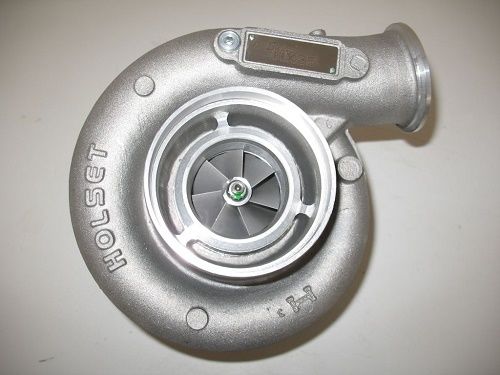ow Turbochargers Work
Turbochargers, once only used in race cars, are now becoming more and more popular among civilian vehicles for its energy conservation and effective horsepower boost. In this article, I would give you a clear picture of what a turbocharger is, how it works and what benefits you can get from it.
The turbocharger contains three parts: turbine aspect, compressor side and cartridges. The turbine side is made up of a turbine wheel and a turbine housing, and the compressor wheel and the compressor housing comprise the compressor side. The cartridges is the the one that attaches the turbine side to the compressor side. The turbocharger is bolted to the exhaust manifold of the engine. Thus, wear out from the engine goes in through the generator inlet to spin the turbine and by the shaft linked to the compressor, the compressor tyre spins too.

Therefore, it compresses the ambient air and pumps the finished to the cylinders. The greater exhaust that goes through the blades, the faster they spin, and the engine gets more electric power. Usually, the turbocharger for a four-cylinder car can reach speeds of up to 150, 000 revoltion per minute so that the generator shaft must be supported very carefully. Most bearings would explode at speeds like this, so most turbos, like click here, use a fluid bearing.
This type of bearing supports the shaft on a thin layer of oil that is constantly driven around the shaft. This kind of serves two purposes: it cools the shaft and several of the other turbocharger parts, and it allows the shaft to rotate without much friction.
Nevertheless, the turbocharger cannot provide an immediate power raise when you step on the gas, and we call it "lag". That is because it always needs a second for the turbine to get up to speed before boost is produced. And how to decrease turbo separation? One way to decrease turbo lag is to reduce the weight of the turbo, thus lowering the inertia of the rotating parts. And the surest way to reduce the weight of the turbo is to make it smaller. However , the smaller turbocharger may provide an immediate power boost at lower engine speeds, but may burn the turbocharged at a higher one, as an extremely large volume level of air surely will cause the blades rotate very quickly and get the temperature rising too high. Therefore, many people choose to use two turbochargers of different sizes. The smaller spins quickly to reduce lag when at lower engine rates, while the speeds get higher, the larger turbo will take over to provide more boost.
A turbocharger also helps at high altitudes, where the air is much less dense, for its air compression function to let more air in to burn and so provide more power.
